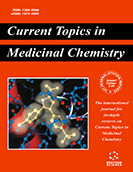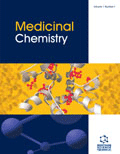摘要
目的:高龄是年龄相关性黄斑变性(AMD)的最大危险因素。 Sumoylation是一种可逆的翻译后修饰,它将小肽,小泛素样修饰物(SUMO)与靶蛋白结合。最近发现,SUMO化的失调与几种与年龄相关的疾病密切相关。然而,视网膜衰老和衰老过程中SUMO化的影响仍然难以捉摸。本研究旨在探讨SUMO化途径在衰老视网膜和早衰视网膜色素上皮(RPE)细胞中的功能和调节。 方法:1.5和10个月的C57 / B6小鼠用于比较老化研究。 ARPE原代培养物和ARPE-19细胞均用于测定系统。 QRT-PCR用于分析mRNA表达。 Western印迹和免疫荧光用于分析蛋白质表达。细胞流式细胞术用于细胞周期进展分析。分析RPE屏障功能和衰老相关的β-半乳糖苷酶(SAβ-gal)活性以测量细胞衰老。 结果:我们显示SUMO酶和全局蛋白质SUMO化的表达在衰老的小鼠视网膜和氧化应激(OS)诱导的早衰RPE细胞中下调。在RPE衰老期间观察到SUMO E1,E2和E3酶的显着改变的分布。 SUMO化的抑制减轻了RPE细胞中OS诱导的细胞衰老,如通过降低p21和p53表达以及降低G0 / G1期细胞周期停滞百分比所表明的。有趣的是,SUMO E1的抑制抑制了早衰衰老RPE细胞中促炎细胞因子和趋化因子的表达。然而,在OS诱导的RPE衰老过程中,抑制SUMO化并未阻止DNA损伤。 结论:我们的数据表明SUMO化严格调节视网膜和RPE衰老
关键词: 蛋白质SUMO化,RPE衰老,氧化应激, AMD
Current Molecular Medicine
Title:Inhibition of Sumoylation Alleviates Oxidative Stress-induced Retinal Pigment Epithelial Cell Senescence and Represses Proinflammatory Gene Expression
Volume: 18 Issue: 9
关键词: 蛋白质SUMO化,RPE衰老,氧化应激, AMD
摘要: Purpose: Advanced age is the largest risk factor for age-related macular degeneration (AMD). Sumoylation is a reversible post-translational modification that conjugates small peptide, small ubiquitin-like modifier (SUMO), to a target protein. Dysregulation of sumoylation is recently found to be critically involved in several age-related disorders. However, the effects of sumoylation during retina senescence and aging remains elusive. This study is aimed to investigate the function and regulation of sumoylation pathway in the aging retina and premature senescent retinal pigment epithelial (RPE) cells.
Methods: 1.5- and 10-month C57/B6 mice were used for comparative aging study. Both ARPE primary cultures and ARPE-19 cells were used for assay systems. The qRT-PCR was used for analysis of mRNA expression. Western blot and immunofluorescence were used to analyze the protein expression. Cell flow cytometry was used for cell cycle progression analysis. RPE barrier function and senescent-associated β-galactosidase (SA β-gal) activity were analyzed to measure cellular senescence.
Results: We show that the expression of SUMO enzymes and global protein sumoylation were downregulated in the aging mouse retina, and in the oxidative stress (OS) -induced premature senescent RPE cells. Dramatical altered distribution of SUMO E1, E2 and E3 enzymes were observed during RPE senescence. Inhibition of sumoylation alleviated OS–induced cell senescence in RPE cells, as indicated by decreased p21 and p53 expression and decreased percentage of cell cycle arrest at G0/G1 phase. Intriguingly, inhibition of SUMO E1 repressed the expression of proinflammatory cytokine and chemokine in the premature senescent RPE cells. However, inhibition of sumoylation did not prevent DNA damage during the OS-induced RPE senescence process.
Conclusions: Our data indicate sumoylation critically regulates retina and RPE aging and that targeting sumoylation process may provide potential therapeutic strategy for AMD treatment.
Export Options
About this article
Cite this article as:
Inhibition of Sumoylation Alleviates Oxidative Stress-induced Retinal Pigment Epithelial Cell Senescence and Represses Proinflammatory Gene Expression, Current Molecular Medicine 2018; 18 (9) . https://dx.doi.org/10.2174/1566524019666190107154250
| DOI https://dx.doi.org/10.2174/1566524019666190107154250 |
Print ISSN 1566-5240 |
| Publisher Name Bentham Science Publisher |
Online ISSN 1875-5666 |
 57
57 12
12 2
2 1
1
- Author Guidelines
- Bentham Author Support Services (BASS)
- Graphical Abstracts
- Fabricating and Stating False Information
- Research Misconduct
- Post Publication Discussions and Corrections
- Publishing Ethics and Rectitude
- Increase Visibility of Your Article
- Archiving Policies
- Peer Review Workflow
- Order Your Article Before Print
- Promote Your Article
- Manuscript Transfer Facility
- Editorial Policies
- Allegations from Whistleblowers
Related Articles
-
Pancreatic Cancer: Promises and Failures of Target Therapies
Reviews on Recent Clinical Trials Bone Tissue Regeneration - Application of Mesenchymal Stem Cells and Cellular and Molecular Mechanisms
Current Stem Cell Research & Therapy Heparin Affin Regulatory Peptide: A New Target for Tumour Therapy?
Current Cancer Drug Targets Dithiocarbamate-based coordination compounds as potent proteasome inhibitors in human cancer cells
Mini-Reviews in Medicinal Chemistry Mesenchymal Stem Cells Enhanced Cardiac Nerve Sprouting via Nerve Growth Factor in a Rat Model of Myocardial Infarction
Current Pharmaceutical Design Editorial [Hot Topic:Neurodegenerative Disorders: From Molecules to Man (Part 1) (Guest Editors: Giuseppe Di Giovanni, Vincenzo Di Matteo and Ennio Esposito)]
CNS & Neurological Disorders - Drug Targets MicroRNA Regulatory Network in Human Colorectal Cancer
Mini-Reviews in Medicinal Chemistry Acute Right Ventricular Failure in the Setting of Acute Pulmonary Embolism or Chronic Pulmonary Hypertension: A Detailed Review of the Pathophysiology, Diagnosis, and Management
Current Cardiology Reviews Strategies for Increasing the Solubility and Bioavailability of Anticancer Compounds: β-Lapachone and Other Naphthoquinones
Current Pharmaceutical Design Inflammation and Chronic Oxidative Stress in Radiation-Induced Late Normal Tissue Injury: Therapeutic Implications
Current Medicinal Chemistry A Comprehensive Study of Pharmacological Behaviors, Nano-Formulations, and Applications of Rosemary
The Natural Products Journal Doxorubicin vs. ladirubicin: methods for improving osteosarcoma treatment
Mini-Reviews in Medicinal Chemistry Pathophysiology of Post-Operative Low Cardiac Output Syndrome
Current Vascular Pharmacology Angiogenic and Vascular Modulation by Extracellular Matrix Cleavage Products
Current Pharmaceutical Design Recent Advances in Ethnopharmacological and Toxicological Properties of Bioactive Compounds from <i>Aloe barbadensis</i> (Miller), <i>Aloe vera</i>
Current Bioactive Compounds Factors Predisposing to Hypertension in Subjects Formerly Born Preterm: Renal Impairment, Arterial Stiffness, Endothelial Dysfunction or Something Else?
Current Hypertension Reviews Vascular Effects of Phytoestrogens and Alternative Menopausal Hormone Therapy in Cardiovascular Disease
Mini-Reviews in Medicinal Chemistry Domperidone in Parkinson’s Disease: A Perilous Arrhythmogenic or the Gold Standard?
Current Drug Safety Diverse Mechanisms of AKT Pathway Activation in Human Malignancy
Current Cancer Drug Targets Insights on the Neuromodulatory Propensity of Selaginella (Sanjeevani) and its Potential Pharmacological Applications
CNS & Neurological Disorders - Drug Targets

















.jpeg)








